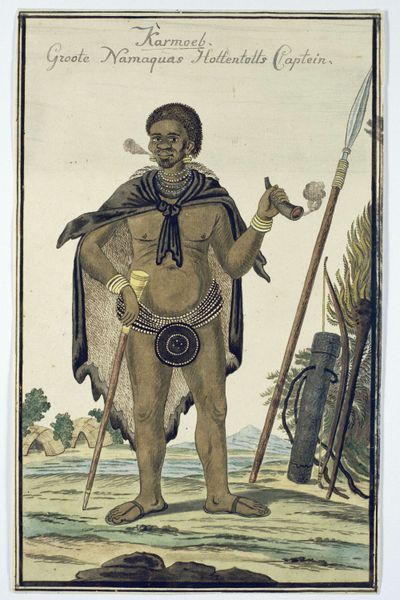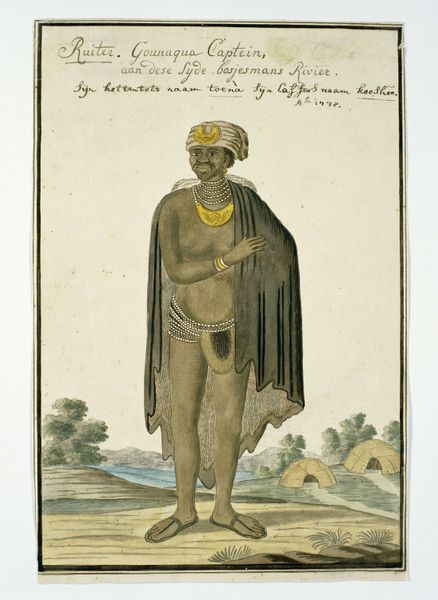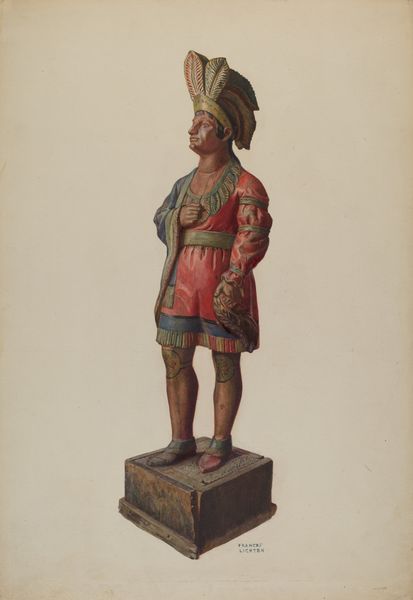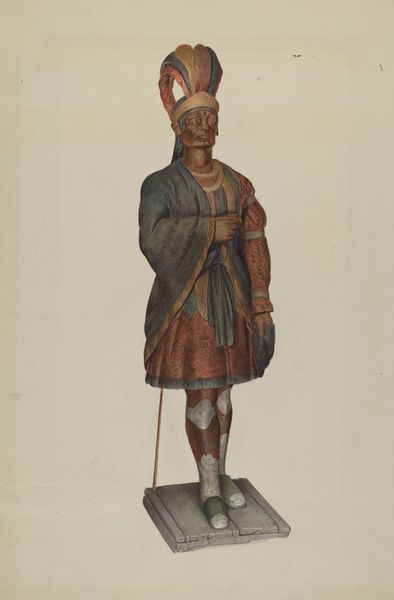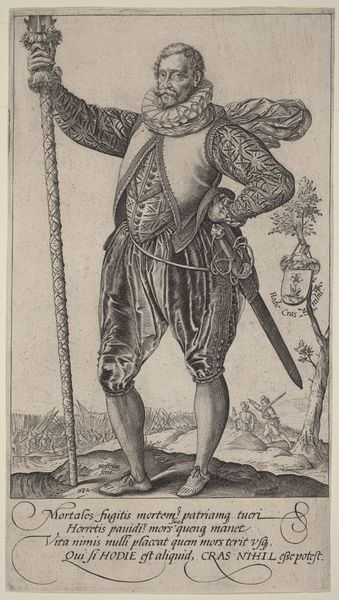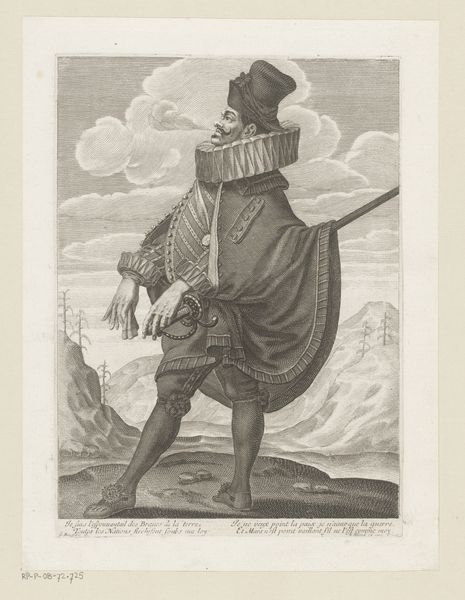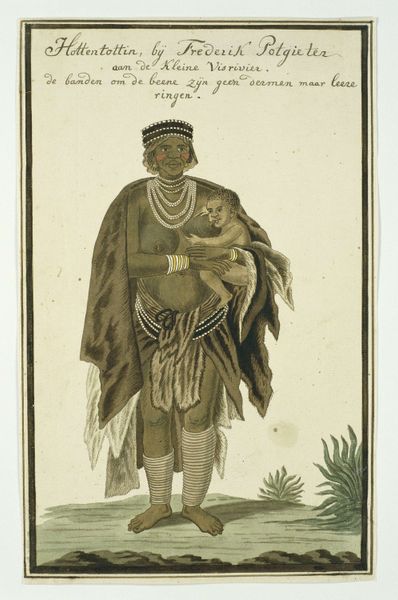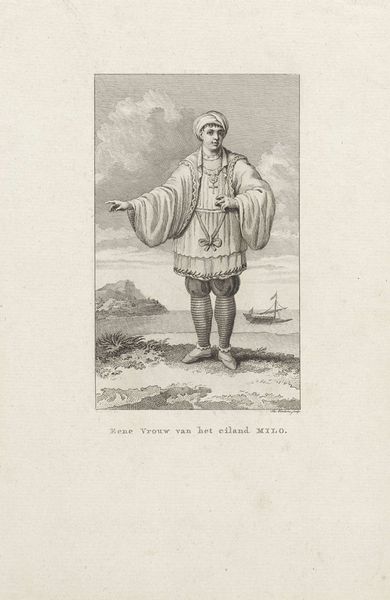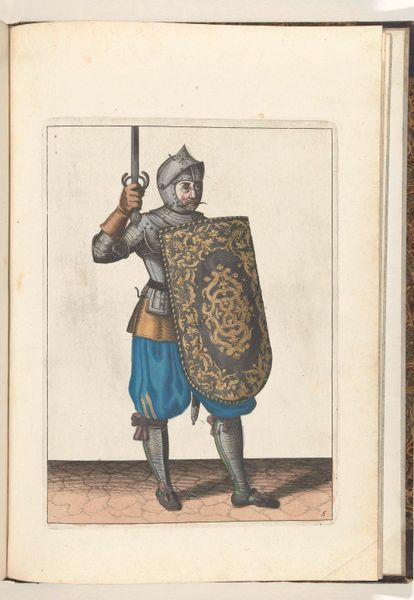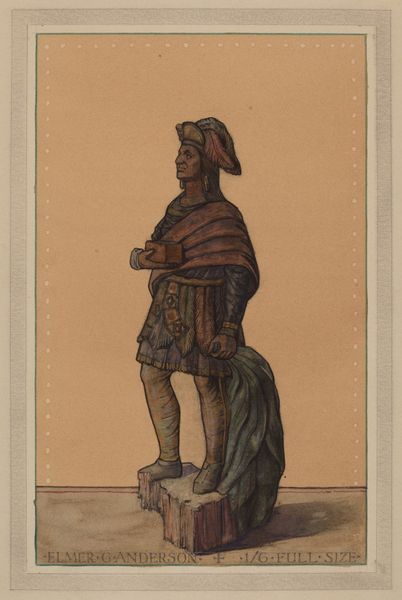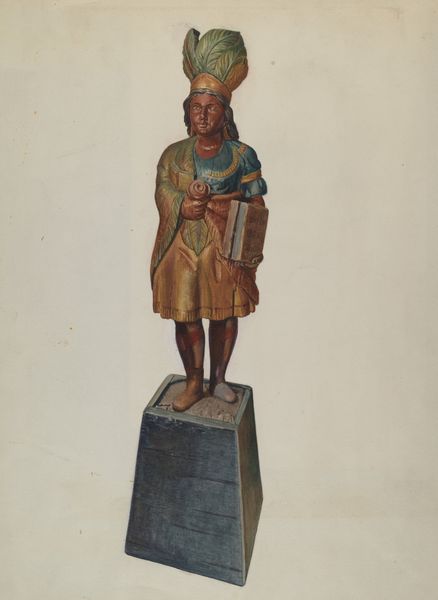
Dimensions: height 660 mm, width 480 mm, height 348 mm, width 218 mm, height 326 mm, width 201 mm
Copyright: Rijks Museum: Open Domain
Editor: This is "Ruiter, a Gonaqua captain," a watercolor by Robert Jacob Gordon, dating to around 1778. There's something striking about his posture and the vast landscape behind him. What strikes you most when you look at this piece? Curator: Ah, Robert Jacob Gordon! This isn’t just a portrait, is it? It’s a little theatre of colonial encounter, isn't it? That vast landscape – that's the stage upon which identity, power, and perception play out. I find myself pondering: is this Ruiter's land, or is it Gordon's perception of it? Editor: That's interesting, because it does feel like the Captain is positioned almost like a specimen. Does the setting tell us something about how Gordon wanted to portray him? Curator: Absolutely. Gordon wasn't just painting a man; he was curating an image of the “other.” Notice the detail in Ruiter's clothing, contrasted with the almost sketched-in landscape. It’s as if Ruiter is being cataloged, categorized. What do *you* make of the light? How it hits him versus the background? Editor: It makes him almost pop from the background. Like he's superimposed rather than integrated. I hadn't really thought about it that way before. Curator: Precisely. The sharp focus separates him, turns him into an exhibit. Colonial art, particularly, becomes a powerful tool not only to represent but also to shape perceptions. Editor: So, more than just a portrait, it's a statement about a whole era and its values. Curator: Indeed! It whispers of power, observation, and the complicated dance of cultures meeting on uncertain ground. It reminds me of a passage: "The eye sees only what the mind is prepared to comprehend." How true, no?
Comments
No comments
Be the first to comment and join the conversation on the ultimate creative platform.
